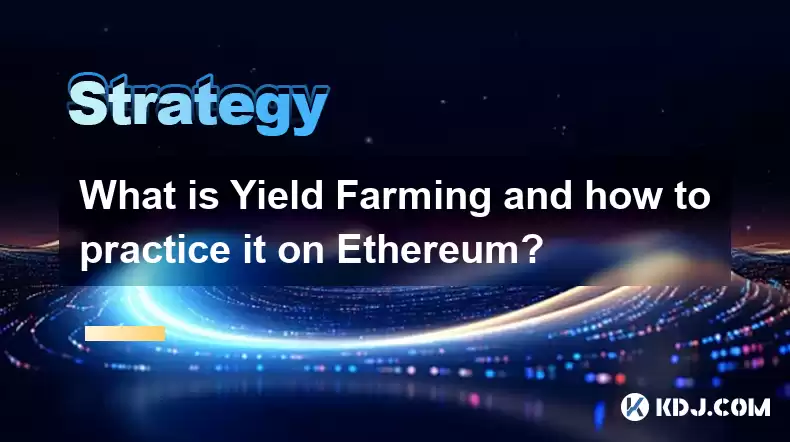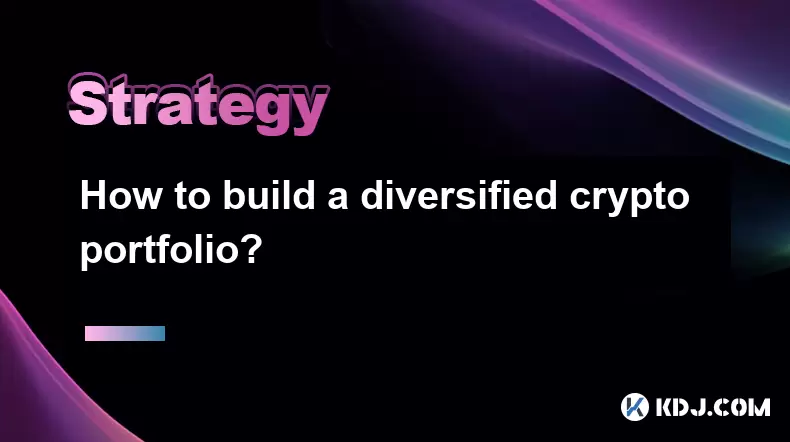-
 Bitcoin
Bitcoin $116400
-0.36% -
 Ethereum
Ethereum $4033
3.40% -
 XRP
XRP $3.302
-1.26% -
 Tether USDt
Tether USDt $1.000
-0.02% -
 BNB
BNB $796.1
1.67% -
 Solana
Solana $177.8
1.89% -
 USDC
USDC $0.9999
0.00% -
 Dogecoin
Dogecoin $0.2314
4.09% -
 TRON
TRON $0.3381
0.14% -
 Cardano
Cardano $0.7989
1.22% -
 Stellar
Stellar $0.4496
-1.84% -
 Chainlink
Chainlink $20.42
9.42% -
 Hyperliquid
Hyperliquid $41.17
0.88% -
 Sui
Sui $3.914
3.77% -
 Bitcoin Cash
Bitcoin Cash $584.7
1.52% -
 Hedera
Hedera $0.2632
-0.54% -
 Avalanche
Avalanche $24.09
3.40% -
 Ethena USDe
Ethena USDe $1.001
-0.02% -
 Litecoin
Litecoin $123.2
1.33% -
 Toncoin
Toncoin $3.318
-0.04% -
 UNUS SED LEO
UNUS SED LEO $8.984
-0.05% -
 Shiba Inu
Shiba Inu $0.00001323
2.85% -
 Uniswap
Uniswap $10.90
4.41% -
 Polkadot
Polkadot $3.999
3.34% -
 Dai
Dai $1.000
0.01% -
 Cronos
Cronos $0.1630
9.64% -
 Bitget Token
Bitget Token $4.484
0.82% -
 Monero
Monero $272.4
2.44% -
 Pepe
Pepe $0.00001173
6.03% -
 Aave
Aave $290.8
2.88%
What is Yield Farming and how to practice it on Ethereum?
By providing liquidity to Ethereum-based DeFi platforms, yield farming empowers users to earn passive income through rewards, fees, and newly minted tokens.
Feb 26, 2025 at 02:18 pm

Key Points
- Definition of Yield Farming
- Overview of the Ethereum Blockchain
- Understanding DeFi Platforms
- Strategies for Yield Farming
- Risks Involved and Mitigation Techniques
- Step-by-Step Guide to Yield Farming on Ethereum
- Frequently Asked Questions
Article Content
What is Yield Farming?
Yield farming is a decentralized finance (DeFi) strategy that enables investors to earn passive income by providing liquidity to decentralized exchanges (DEXes) and other DeFi protocols. Yield farming utilizes liquidity pools, where users deposit their cryptocurrency assets to earn rewards in the form of fees, interest, or newly minted tokens.
Overview of the Ethereum Blockchain
Ethereum is a decentralized blockchain platform that supports smart contracts, enabling the development of decentralized applications (dApps) and DeFi protocols. Yield farming primarily occurs on the Ethereum blockchain due to its established network effect, robust infrastructure, and abundance of liquidity providers.
Understanding DeFi Platforms
DeFi platforms are decentralized financial services that operate on blockchains, eliminating the need for intermediaries such as banks. These platforms facilitate yield farming by connecting liquidity providers with borrowers or users who pay fees for accessing the liquidity pool. DeFi platforms often utilize automated market makers (AMMs) to maintain liquidity and price stability.
Strategies for Yield Farming
Various yield farming strategies exist, each with its own risks and potential rewards:
- Liquidity Provision: Users deposit crypto assets into liquidity pools to earn fees and rewards based on their share of the pool.
- Staking: Users lock up or stake their tokens to support blockchain networks and earn interest or rewards.
- Lending: Users lend their crypto assets to borrowers and earn interest or fees.
- Arbitrage: Users exploit price differences between different exchanges or liquidity pools to make profit.
Risks Involved and Mitigation Techniques
Yield farming involves inherent risks, including:
- Smart Contract Risk: DeFi protocols are based on smart contracts, which can contain bugs or vulnerabilities that could result in loss of funds.
- Liquidity Risk: Liquidity pools can experience volatility or low liquidity, making it difficult for users to withdraw their assets or earn significant rewards.
- Rug Pulls: Some DeFi projects may be scams or "rug pulls," where the developers abscond with investor funds.
To mitigate these risks, investors should:
- Research yield farming projects thoroughly before investing.
- Choose established and reputable DeFi platforms.
- Diversify their investments across multiple liquidity pools and platforms.
- Use reputable hardware wallets to store their crypto assets securely.
Step-by-Step Guide to Yield Farming on Ethereum
- Set up an Ethereum Wallet: Create a Ethereum wallet such as MetaMask or Trust Wallet.
- Purchase Ethereum (ETH): Acquire ETH through a cryptocurrency exchange or broker.
- Connect to a DeFi Platform: Visit a DeFi platform such as Uniswap, SushiSwap, or Aave and connect your Ethereum wallet.
- Choose a Yield Farming Strategy: Select a liquidity pool or staking option that aligns with your investment goals and risk tolerance.
- Deposit Assets: Deposit ETH or other crypto assets into the selected liquidity pool or staking contract.
- Monitor Performance: Track your yield farming investments regularly to monitor returns and manage risks.
Frequently Asked Questions
Q: What is the difference between yield farming and liquidity mining?
A: Yield farming encompasses a broader range of DeFi strategies that generate income, while liquidity mining specifically refers to incentives offered by liquidity pools to encourage users to provide liquidity.
Q: Can I yield farm with small amounts of crypto?
A: Yes, it is possible to yield farm with small amounts of crypto, but investors should consider the potential transaction fees and risks involved.
Q: What are the best yield farming strategies for beginners?
A: Liquidity provision in stablecoin pools is a low-risk strategy suitable for beginners. However, it is essential to research different strategies and choose one that aligns with your investment goals.
Q: How do I calculate yield farming profits?
A: Yield farming profits are based on the rewards earned relative to the amount invested and the duration of the investment. Different protocols have varying yield models, so calculating profits will depend on the specific platform and strategy.
Q: Is yield farming on Ethereum safe?
A: While yield farming on Ethereum is generally safe, it does involve inherent risks such as smart contract vulnerabilities, liquidity risks, and rug pulls. Investors should conduct thorough research, choose reputable platforms, and implement risk mitigation measures to mitigate these risks.
Disclaimer:info@kdj.com
The information provided is not trading advice. kdj.com does not assume any responsibility for any investments made based on the information provided in this article. Cryptocurrencies are highly volatile and it is highly recommended that you invest with caution after thorough research!
If you believe that the content used on this website infringes your copyright, please contact us immediately (info@kdj.com) and we will delete it promptly.
- Decentralized Data: Taking the Driver's Seat in the Data Economy
- 2025-08-09 14:30:11
- Bitcoin vs. Gold: The Store-of-Value Showdown in the Digital Age
- 2025-08-09 14:30:11
- BlockDAG, Stellar, and Crypto Adoption: Navigating the Hype
- 2025-08-09 14:50:12
- Litecoin Price Surge: Riding the Wave of Institutional Interest and ETF Hopes
- 2025-08-09 14:50:12
- Chainlink's Wild Ride: Whales Are Still Loading Up on LINK!
- 2025-08-09 15:10:11
- Ruvi AI: Solana's New Challenger Dominating Token Sales with AI Innovation
- 2025-08-09 14:55:15
Related knowledge

How to use stop-loss orders to limit potential losses?
Aug 08,2025 at 02:01pm
Understanding Stop-Loss Orders in Cryptocurrency TradingA stop-loss order is a risk management tool used by traders to automatically sell a cryptocurr...

How to read cryptocurrency charts and use technical analysis?
Aug 08,2025 at 11:08am
Understanding the Basics of Cryptocurrency ChartsCryptocurrency charts are graphical representations of price movements over time. These charts are es...

How to do your own research (DYOR) before investing in a crypto project?
Aug 08,2025 at 09:07pm
Understanding the Core Principles of DYOR in CryptocurrencyEngaging in due diligence before investing in any cryptocurrency project is essential to mi...

How to build a diversified crypto portfolio?
Aug 09,2025 at 12:21pm
Understanding the Importance of Diversification in CryptoDiversification in the cryptocurrency space is a strategy used to reduce risk by spreading in...

How to avoid common crypto investment mistakes?
Jul 13,2025 at 01:35am
Understanding the Risks of Crypto InvestmentInvesting in cryptocurrency can be highly rewarding, but it also comes with significant risks. One of the ...

What is a long-short crypto strategy?
Jul 15,2025 at 10:56am
Understanding the Basics of a Long-Short Crypto StrategyA long-short crypto strategy is an investment approach where traders simultaneously take long ...

How to use stop-loss orders to limit potential losses?
Aug 08,2025 at 02:01pm
Understanding Stop-Loss Orders in Cryptocurrency TradingA stop-loss order is a risk management tool used by traders to automatically sell a cryptocurr...

How to read cryptocurrency charts and use technical analysis?
Aug 08,2025 at 11:08am
Understanding the Basics of Cryptocurrency ChartsCryptocurrency charts are graphical representations of price movements over time. These charts are es...

How to do your own research (DYOR) before investing in a crypto project?
Aug 08,2025 at 09:07pm
Understanding the Core Principles of DYOR in CryptocurrencyEngaging in due diligence before investing in any cryptocurrency project is essential to mi...

How to build a diversified crypto portfolio?
Aug 09,2025 at 12:21pm
Understanding the Importance of Diversification in CryptoDiversification in the cryptocurrency space is a strategy used to reduce risk by spreading in...

How to avoid common crypto investment mistakes?
Jul 13,2025 at 01:35am
Understanding the Risks of Crypto InvestmentInvesting in cryptocurrency can be highly rewarding, but it also comes with significant risks. One of the ...

What is a long-short crypto strategy?
Jul 15,2025 at 10:56am
Understanding the Basics of a Long-Short Crypto StrategyA long-short crypto strategy is an investment approach where traders simultaneously take long ...
See all articles

























































































